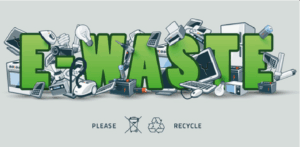 If your business handles electrical and electronic equipment (EEE) — whether you’re a manufacturer, distributor, importer, or recycler — then it’s time to prepare for a significant regulatory shift.
If your business handles electrical and electronic equipment (EEE) — whether you’re a manufacturer, distributor, importer, or recycler — then it’s time to prepare for a significant regulatory shift.
From November 2025, the long-standing Waste Electrical and Electronic Equipment Regulations 2013 (WEEE 2013) will be replaced by a modernised framework: the Electrical and Electronic Equipment Regulations (EEE Regulations).
Here’s what you need to know, and how your business can stay ahead of the curve.
🔄 Why the Change?
The current WEEE 2013 regulations have been in place for over a decade, and while they’ve served a purpose in reducing electronic waste, the landscape has changed dramatically. We now face:
The new EEE Regulations aim to better reflect today’s market and environmental priorities — shifting from just managing waste to designing out waste altogether.
🧾 What’s Changing?
✅ 1. Clearer Definitions of EEE
The new regulations will provide updated and expanded definitions of what counts as EEE — including smart devices, disposable e-cigarettes, batteries-included items, and solar-powered tech.
✅ 2. Wider Producer Responsibility
Producers and importers will face:
✅ 3. Focus on Repair, Reuse & Design
EEE producers will be expected to:
✅ 4. Online Marketplaces Included
The new EEE rules will hold online platforms accountable for ensuring sellers on their sites are compliant — closing a major loophole from the WEEE regime.
📅 What Should You Be Doing Now?
Even though the EEE regulations don’t formally begin until November 2025, you should start preparing now:
🔍 Audit Your Products
📊 Review Your Supply Chain
📝Update Internal Processes
🧠 Final Thoughts
The move from WEEE 2013 to the new EEE Regulations isn’t just a change in name — it’s a shift in mindset.
The emphasis is now on sustainability, circularity, and accountability. Businesses that adapt early will not only stay compliant but also build trust with customers and demonstrate genuine environmental responsibility.
Contact us for further information.